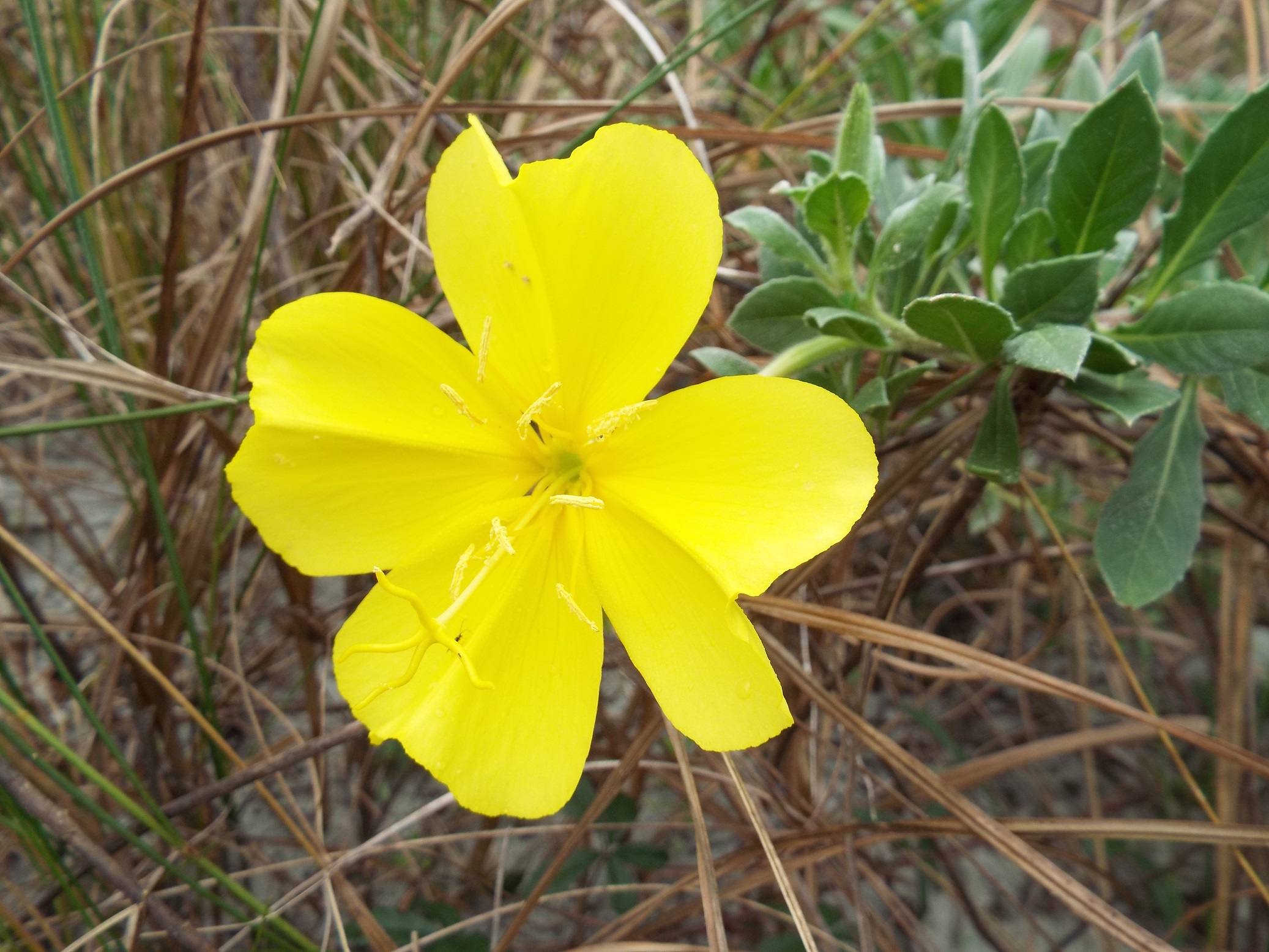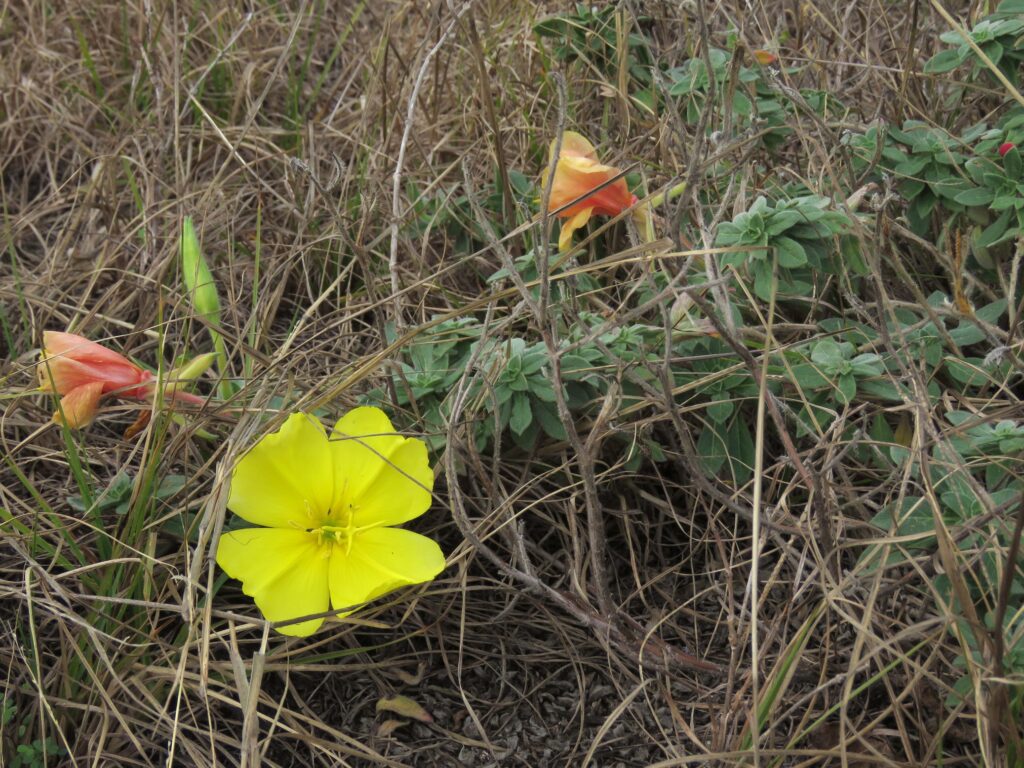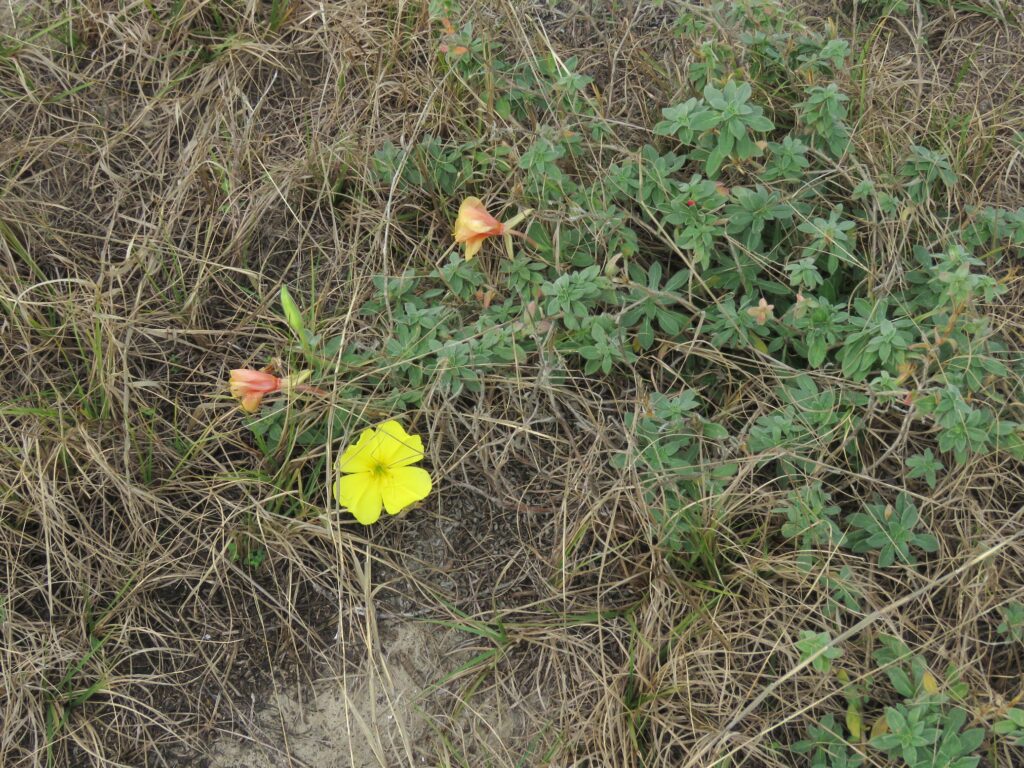



This week for Flora and Fauna Friday it’s a blossoming beach winter wildflower, Beach Evening-Primrose (Oenothera drummondii).
Winter weather leaves us wishing to welcome warm winds and waking wildflowers. Well I’m pretty good at publishing the hot air part of that equation but I can’t do much to make the flowers stir. However, I can at least highlight one of our few cold weather flowering plants. Beach Evening-Primrose is a not an uncommon member of our beach dune ecosystems. It does not grow on the beach itself but is found just behind the dunes. However, its cousin, Seabeach Evening-Primrose (O. humifusa), does grow on the beach. (Just to make things confusing.) Beach Evening-Primrose has a weakly upright posture and usually grows as a low shrub. Its leaves are simple and lance-shaped with a bluish-gray cast to their color. Beach Evening-Primrose is quite similar in appearance to some of our other Evening-Primrose species but what makes it special, apart from its adaptation to the harsh beach dune ecosystem, is its second bloom period. Its primary bloom period is April. Yet, here on Edisto, and the surrounding barrier Islands, you’ll often see this species in full bloom in the middle of January. Four glowing golden-yellow heart-shaped petals folding out into a nearly three inch flower, fluttering in the chilling ocean breeze. It’s an odd but reinvigorating sight in the midst of winter.
An interesting tidbit about this species is that there is evidence to suggest that it can “hear” certain sounds and react to pollinators. A recent study [Viets et al. 2019] found that Beach Evening-Primrose flower petals would vibrate to the hum of insect wingbeats and signal the plant to sweeten that flower’s nectar within just a few minutes. Such a reaction could increase pollination rates by getting preferred pollinators to stick around longer and come back more often while letting the plant avoid wasting nectar on non-pollinating insects or surface bacteria. Whether this acoustic response has any practical benefit to the plant in a natural setting has yet to be studied but the general auditory capacity of plants is a fascinating thing to think about.